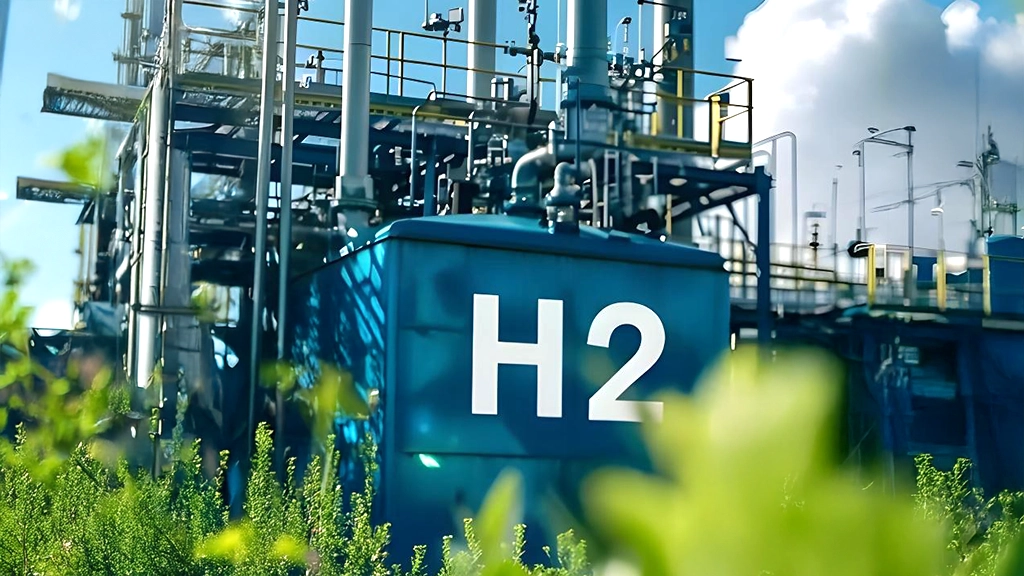Table of Contents
As the global energy sector intensifies its transition toward low-carbon solutions, white hydrogen, also known as natural or geologic hydrogen, is gaining traction as a potential game-changer. Unlike green hydrogen, which is produced through energy-intensive electrolysis, or blue hydrogen, which requires carbon capture, white hydrogen is formed naturally underground and can be extracted with minimal emissions. This clean, naturally occurring energy source is drawing interest from governments, startups, and energy giants alike.
Although commercial development of white hydrogen is still in its early stages, its potential as an abundant, low-cost, and zero-carbon fuel source makes it a compelling addition to the global clean energy mix.
Although commercial development of white hydrogen is still in its early stages, its potential as an abundant, low-cost, and zero-carbon fuel source makes it a compelling addition to the global clean energy mix.
Why White Hydrogen Stands Out
White hydrogen is generated through natural geologic processes, such as water-rock reactions and radiolysis, and is found in subterranean pockets across various parts of the world. Because it forms naturally, white hydrogen does not require additional energy for production, unlike other hydrogen variants that depend on electricity or fossil fuels. This gives it an edge in terms of cost and carbon intensity—making it one of the most environmentally favorable options available.
As demand for hydrogen grows across sectors like heavy industry, transportation, and power generation, white hydrogen could fill a vital role without adding to emissions or energy demand.
Global Projects and Industry Momentum
Several companies and countries are actively investing in the exploration and extraction of white hydrogen. Notable developments include:
- The U.S. Geological Survey and the Colorado School of Mines launched a joint research program in partnership with major energy companies like BP, Chevron, and Petrobras to study geologic hydrogen formations.
- Gold Hydrogen conducted a 650 km² seismic survey in South Australia to evaluate natural hydrogen and helium reserves.
- In the U.S., HyTerra Limited’s Nemaha Project in Kansas reported hydrogen concentrations as high as 96.1%, indicating significant potential for commercial viability.
- Koloma, a Denver-based startup, has raised over $390 million to explore natural hydrogen extraction at scale.
- Natural Hydrogen Energy LLC drilled a test well in Nebraska with plans for commercial-scale extraction.
- Helios Aragón in Spain and Gold Hydrogen (Austria) are also exploring substantial underground reserves with promising results.
These developments mark a shift from scientific curiosity to serious commercial interest and indicate that white hydrogen is on the verge of breaking into mainstream energy strategy discussions.
Comparing Hydrogen and Renewable Energy Footprints
While solar and wind have dominated the conversation around clean energy, white hydrogen offers compelling advantages, especially in land use and infrastructure. For example:
- Wind farms may require up to 360 times more land than nuclear plants to produce equivalent electricity.
- Solar PV facilities require between 45 and 75 square miles to match the output of a single 1,000-MW nuclear plant.
White hydrogen, extracted from deep underground, avoids these land-intensive requirements and could serve as a high-density, low-footprint complement to intermittent renewable sources.
Technical and Economic Challenges
Despite its promise, white hydrogen faces several critical barriers to full-scale adoption:
- Extraction Technology: Methods to efficiently and sustainably extract hydrogen from the earth’s crust are still being refined. More research is needed to understand subsurface behavior and improve extraction efficiency.
- Infrastructure Development: Transporting and storing hydrogen—especially when extracted from remote locations—requires significant infrastructure investment.
- Economic Viability: While it may be cost-effective in theory, the actual economics of white hydrogen depend on regulatory incentives, scalability, and evolving market demand.
Solving these challenges will require cross-sector collaboration, government support, and continuous innovation in geoscience, materials, and energy infrastructure.
A Natural Path to Net-Zero?
As the urgency to decarbonize intensifies, white hydrogen could play a key role in balancing energy needs with environmental responsibility. It offers a compelling bridge between traditional fossil-based systems and future-forward renewables—especially in regions rich in geological hydrogen reserves.
With global momentum growing, the next decade could see white hydrogen become a cornerstone of clean energy strategies—delivering on the promise of abundant, affordable, and zero-emission fuel.

